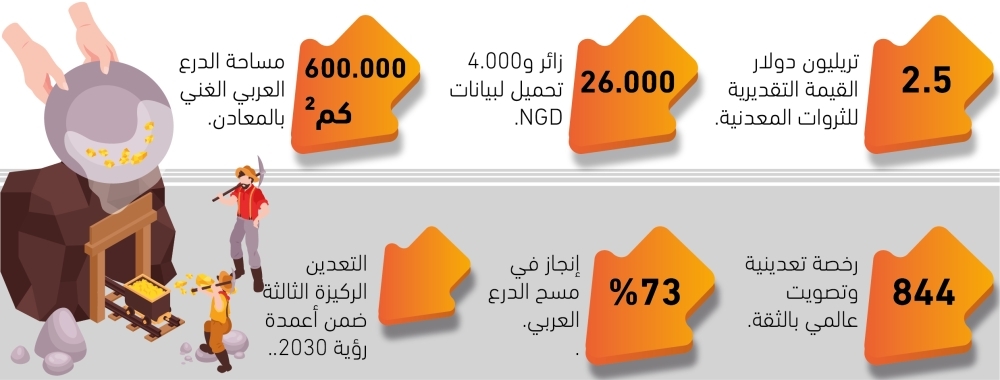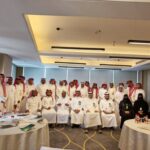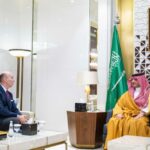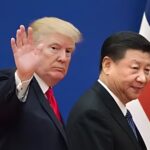
The estimated value of mineral wealth in Saudi Arabia is about 2.5 trillion dollars (9.375 trillion riyals), making the mining sector a candidate to be the third strategic pillar of the national economy after oil and petrochemicals.
Data revealed by the Saudi Geological Survey indicates that the sector is undergoing a qualitative transformation supported by advanced survey programs and attractive legislation, which enhances the Kingdom’s position as a global center for mining investment.
Investment Infrastructure
Amid rising costs and risks in the mining sector, precise geological data has become a pivotal tool for attracting investors. The National Geological Database (NGD) stands out here, providing a digital library containing decades of accumulated geological and geophysical data.
In just one year, the platform recorded over 26,000 visits and nearly 4,000 data download requests, reflecting growing international interest in mining opportunities in the Kingdom.
Survey of the Arabian Shield
In addition to digital platforms, the Authority has completed 73% of the geological survey work in the Arabian Shield region, which spans an area of 600,000 square kilometers. Preliminary results have shown significant potential for strategic minerals such as copper, lithium, and zinc, which form the basis of technology industries and the transition towards a green economy.
Attractive Legislation and Growing Confidence
To enhance the sector’s attractiveness, the Kingdom has worked to update mining investment regulations to ensure greater transparency and ease of procedures. This has contributed to raising the number of mining licenses to 844, reflecting increasing confidence from local and global investors.
Three Strategic Pillars
The development of the sector is based on three interconnected pillars: providing accurate and open data to investors, a modern and transparent legislative environment, and a focus on future minerals, to ensure an advanced position in global value chains.
From Data to Mines
With the integration of digital data, modern legislation, and the results of field surveys, Saudi Arabia continues to build an integrated mining economy. The Kingdom does not merely extract minerals, but extracts value from managing data and resources, making mining one of the pillars of Vision 2030 and a key tool for diversifying the national economy.
Key Mining Indicators:
2.5 trillion dollars estimated value of mineral wealth.
844 mining licenses and a global vote of confidence.
26,000 visitors and 4,000 NGD data downloads.
73% completion of the Arabian Shield survey.
600,000 km² area of the mineral-rich Arabian Shield.
Mining is the third pillar within the pillars of Vision 2030.






